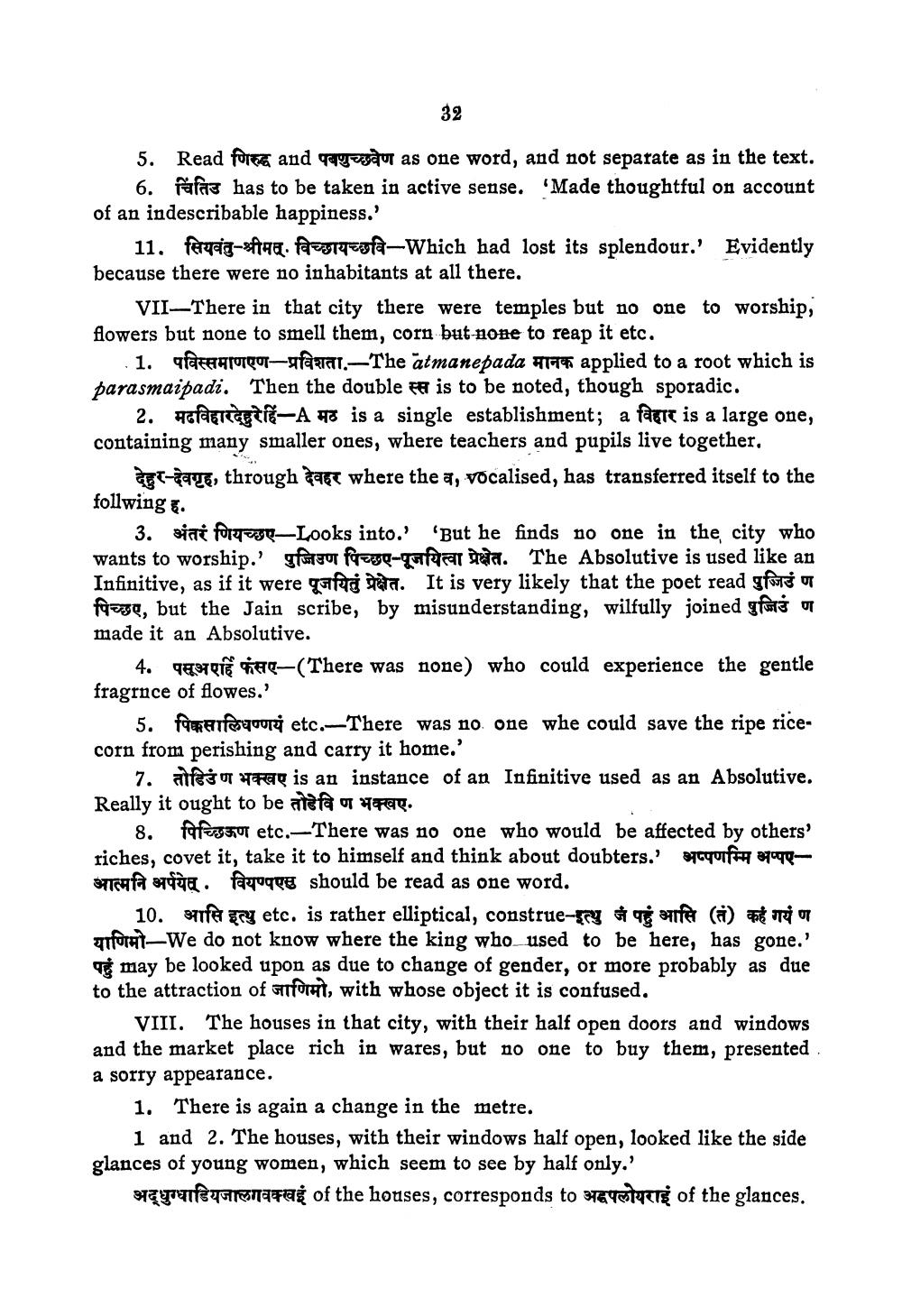________________
32
5. Read for and gu as one word, and not separate as in the text. 6. ff has to be taken in active sense. 'Made thoughtful on account of an indescribable happiness.'
11. सियवंतु श्रीमत् विच्छायच्छवि- Which had lost its splendour.' Evidently because there were no inhabitants at all there.
VII There in that city there were temples but no one to worship, flowers but none to smell them, corn but none to reap it etc.
1. पविस्समाणएण - प्रविशता. – The atmanepada मानक applied to a root which is parasmaipadi. Then the double is to be noted, though sporadic. 2. मढविहारदेहुरेहिं - A मठ is a single establishment; a विहार is a large one, containing many smaller ones, where teachers and pupils live together. where the a, vocalised, has transferred itself to the
, through
follwing .
3. अंतरं नियच्छए – Looks into.' 'But he finds no one in the city who wants to worship. ' पुज्जिउण पिच्छए- पूजयित्वा प्रेक्षेत. The Absolutive is used like an Infinitive, as if it were qafa. It is very likely that the poet read ge f, but the Jain scribe, by misunderstanding, wilfully joined g made it an Absolutive.
4. (There was none) who could experience the gentle fragrnce of flowes.'
5. ff etc.-There was no one whe could save the ripe ricecorn from perishing and carry it home.'
7. तोडिउंण भक्खए is an instance of an Infinitive used as an Absolutive. Really it ought to be तोडेवि ण भक्खए.
8. faf etc.-There was no one who would be affected by others' riches, covet it, take it to himself and think about doubters.' f — आत्मनि अर्पयेत् वियण्पre should be read as one word.
10. आसि इत्थु etc. is rather elliptical, construe-इत्थु जं पहुं आसि (तं) कहं गयं ण fort-We do not know where the king who used to be here, has gone.' may be looked upon as due to change of gender, or more probably as due to the attraction of for, with whose object it is confused.
VIII. The houses in that city, with their half open doors and windows and the market place rich in wares, but no one to buy them, presented a sorry appearance.
1. There is again a change in the metre.
1 and 2. The houses, with their windows half open, looked like the side glances of young women, which seem to see by half only.'
अधुग्धाडियजालगवक्खहूं of the houses, corresponds to अद्धपलोयराहूं of the glances.




